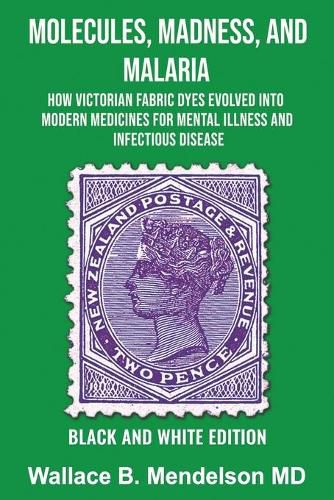Readings Newsletter
Become a Readings Member to make your shopping experience even easier.
Sign in or sign up for free!
You’re not far away from qualifying for FREE standard shipping within Australia
You’ve qualified for FREE standard shipping within Australia
The cart is loading…






Black and White Edition: In order to provide a paperback with a relatively lower price, this edition contains black and white illustrations. The regular full color paperback and eBook editions of this book are also available in the Kindle store. In 1856, William Henry Perkin, an 18 year old chemistry student in London, was attempting to synthesize quinine, when instead he ended up with a dark sticky substance in the bottom of his test tube. When cleaning it out with alcohol, he produced a bright purple liquid, which became aniline purple, the first synthetic fabric dye, and inadvertently launched an industry. Within the next few years, about 30 companies appeared, using synthetic organic chemistry to make dyes, and later over the years paints, cosmetics, agricultural chemicals, food coloring-and medicines. Among these were medicines for psychiatry and infectious diseases, particularly malaria, which at the time was devastating the development of a worldwide empire. These efforts were not in isolation, but intertwined, culminating in the appearance in the 1950s of a failed antimalarial, chlorpromazine (Thorazine), which revolutionized care of psychotic patients. Sulfa drugs, derived from a red azo dye, became the building blocks on one of the trails to the first antidepressants. A penicillin preservative became meprobamate, the first blockbuster tranquilizer. Later, benzodiazepine tranquilizers were created from fabric dyes their inventor had previously discarded as a student.
The role of dye-derived synthetic drugs continues to this day, as indigo and related dyes are being developed for treating infections and cancer. Methylene blue, discovered 150 years ago, is now being studied for possible use in Alzheimer’s disease. This story is as old as seventeenth century missionaries discovering medicinal leaves in the high Andes, and as new as today’s headlines. In this book, Dr. Mendelson uses his 40 years of experience in pharmacology to describe the little-known history of the intertwined efforts to find treatments for psychiatric illnesses and infectious diseases.
$9.00 standard shipping within Australia
FREE standard shipping within Australia for orders over $100.00
Express & International shipping calculated at checkout
Black and White Edition: In order to provide a paperback with a relatively lower price, this edition contains black and white illustrations. The regular full color paperback and eBook editions of this book are also available in the Kindle store. In 1856, William Henry Perkin, an 18 year old chemistry student in London, was attempting to synthesize quinine, when instead he ended up with a dark sticky substance in the bottom of his test tube. When cleaning it out with alcohol, he produced a bright purple liquid, which became aniline purple, the first synthetic fabric dye, and inadvertently launched an industry. Within the next few years, about 30 companies appeared, using synthetic organic chemistry to make dyes, and later over the years paints, cosmetics, agricultural chemicals, food coloring-and medicines. Among these were medicines for psychiatry and infectious diseases, particularly malaria, which at the time was devastating the development of a worldwide empire. These efforts were not in isolation, but intertwined, culminating in the appearance in the 1950s of a failed antimalarial, chlorpromazine (Thorazine), which revolutionized care of psychotic patients. Sulfa drugs, derived from a red azo dye, became the building blocks on one of the trails to the first antidepressants. A penicillin preservative became meprobamate, the first blockbuster tranquilizer. Later, benzodiazepine tranquilizers were created from fabric dyes their inventor had previously discarded as a student.
The role of dye-derived synthetic drugs continues to this day, as indigo and related dyes are being developed for treating infections and cancer. Methylene blue, discovered 150 years ago, is now being studied for possible use in Alzheimer’s disease. This story is as old as seventeenth century missionaries discovering medicinal leaves in the high Andes, and as new as today’s headlines. In this book, Dr. Mendelson uses his 40 years of experience in pharmacology to describe the little-known history of the intertwined efforts to find treatments for psychiatric illnesses and infectious diseases.